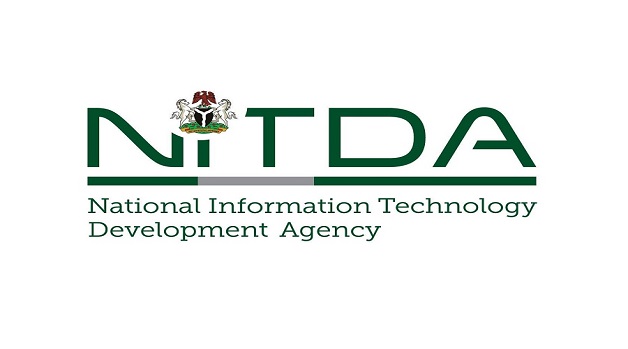E-Business
Digital Ads & Media Trends to Watch Out For

It has been revealed by BI that Google is refunding advertisers, whose campaigns were placed via DoubleClick Bid Manager on websites with fake traffic,
This ad fraud incident highlights two of the pressing issues in digital and programmatic advertising:
Invalid Traffic, Or Ad Fraud
An estimated $6.5 billion in ad spending will be lost this year to fraud, down 10% from 2016, according to a report by the Association of National Advertisers and WhiteOps.
This can happen in several ways, including pages that use bots (non-humans) to inflate impressions, or exchanges that “spoof” inventory low-quality websites with minimal traffic as premium ad space.
Transparency and The “Ad Tech” Tax
The complexity and opacity of the programmatic ad supply chain make it difficult for ad-buyers to track where their dollars are spent.
In a hypothetical situation in which an advertiser places an $100 ad through DoubleClick, Google would keep 7-10% and relay the purchase through to its ad tech partners for them to place the ad on the right website, and whichever ad exchange or ad network is used would also take a cut from the remaining budget – this is known as the “ad tech tax.”
BI has however pointed out that Google is working on a solution that should prevent this from happening again, and that should increase transparency and accountability in digital advertising.
The company is investigating which of its partners are responsible for placing ads on websites with invalid traffic and is developing technology to automatically give advertisers full refunds in the event of ad fraud.
Here are digital Media Trends I believe you should watch out for.
Consumer habits are changing and disruptive technologies are evolving. Join me at the Nigeria Innovation Summit 2017 to learn more on how it affects the media industry. Register here: http://innovationsummit.ng/
Meanwhile, here are the 9 most powerful trends for this year.
– To begin with, Google has already been rewarding sites optimized for mobile performance with higher rankings. This has prompted the shift to accelerated mobile pages.
And while AMPs aren’t exactly a search engine factor, sites that adopt AMP offer better user experiences and register more clicks and impressions. And all these do affect SEO.
– Video content remains the next big thing after big data and analytics. According to a Brain Rules study, Video is projected to rise 79% by 2018. Research shows that video content is in the lead this year.
– The 24 hour content currently been driven by Facebook Messenger, Instagram Stories, Snapchat, and WhatsApp who have all released versions of content that disappears within 24 hours after posting.
Whether this trend lasts or a new more popular release arrives, right now companies need to take a holistic social media approach to attract a larger share of their target audience.
– The use of infographics appears to be on the rise, more so on Twitter than on other platforms. Some are easy to read, and others contain a great amount of data.
But, every style content has an audience, and for now, users are enjoying Infographic creativity and how they are evolving. If their view changes and they become more dimensional, or voice features are integrated, they may become more popular.
– The amount of content that influencers are producing is increasing. Although I am a firm believer in quality versus quantity, the need to share and curate other user content makes the most sense.
However, a growing number of influencers are now buying followers. The rise of paid over organic influence is becoming worrisome.
– Social media consumption is at an all-time high. Platforms are making it nearly impossible for companies to manage social media on their own with new feature releases coming out regularly. The competition amongst the platforms is fierce, but one thing that we do know is that Instagram is well on its way to becoming King, dragging content right along with it.
According to Business Insider, Instagram Stories has emerged as a clear favorite for marketers over Snapchat.
– On November 1, 2016, it was announced by StatCounter that in the first time, mobile usage had surpassed desktop with 51.3% of Internet users preferring their smartphones or tablets over their desktops when using the Internet. What does this mean for SEO?
*Celestine Achi is the chief digital marketing strategist at Cihan Group, owners of Kairoswebtv and Digitalprwire
E-Business
Microsoft Servers Hacked by Chinese Groups

Chinese “threat actors” have hacked Microsoft’s SharePoint document software servers and targeted the data of the businesses using it, the firm has said.

China state-backed Linen Typhoon and Violet Typhoon as well as China-based Storm-2603 were said to have “exploited vulnerabilities” in on-premises SharePoint servers, the kind used by firms, but not in its cloud-based service.
The US tech giant has released security updates in response and has advised all on-premises SharePoint server customers to install them.
“Investigations into other actors also using these exploits are still ongoing,” Microsoft said in a statement.
The firm said it had “high confidence” the hackers would continue to target systems which have not installed its security updates.
It added that it would update its website blog with more information as its investigation continues.
Microsoft said it had observed attacks in which hackers had sent a request to a SharePoint server “enabling the theft of the key material by threat actors”.
Charles Carmakal, chief technology officer at Mandiant Consulting firm, a division of Google Cloud, told reporter, it was “aware of several victims in several different sectors across a number of global geographies”.
Carmakal said it appeared that governments and businesses that use SharePoint on their sites were the primary target.
A number of adversaries who stole material encoded by cryptography were then able to regain ongoing access to the victims’ SharePoint data, he said.
“This was exploited in a very broad way, very opportunistically before a patch was made available. That’s why this is significant,” Carmakal said.
Carmakal said the “China-nexus actor” was deploying techniques similar to previous campaigns associated with Beijing.
Microsoft said Linen Typhoon had “focused on stealing intellectual property, primarily targeting organizations related to government, defence, strategic planning, and human rights” for 13 years.
It added that Violet Typhoon had been “dedicated to espionage”, primarily targeting former government and military staff, non-governmental organizations, think tanks, higher education, the media, the financial sector and the health sector in the US, Europe, and East Asia.
Meanwhile, Storm-2603 was “assessed with medium confidence to be a China-based threat actor”.
E-Business
NIMC Warns Nigerians of Fake NIN Website

National Identity Management Commission (NIMC) has issued a public warning that it is not associated with NINcard.com.

According to the commission, the website has been circulating online to offer services for Nigerians seeking National Identification Number (NIN) services.
NIMC, in a post on its official X account on Wednesday, said, “NINcard.com is not in anyway affiliated to NIMC. Stay vigilant!”
The warning was accompanied by screenshots of fake payment receipts and OTP request pages from the website, both of which were boldly stamped “FAKE” by NIMC to alert the public.
E-Business
NITDA, API Partner Against Harmful Online Content

National Information Technology Development Agency (NITDA), in partnership with the Advocacy for Policy and Innovation (API), has convened a one-day workshop in Abuja to advance dialogue on the draft Online Harm Protection (OHP) Bill to confront harmful online content.

The bill, a rights-based, locally rooted, and multi-stakeholder initiative, is aimed at addressing the challenges of the digital age.
The event, which held yesterday, brought together government officials, civil society, academics, digital platforms, and legal experts to shape a policy framework designed to combat online ills such as cyberbullying, disinformation, hate speech, digital exploitation, and gender-based violence, while safeguarding democratic freedoms and digital inclusion.
In his keynote remarks, Kashifu Inuwa, director general, NITDA urged a paradigm shift in the way society engages with digital technologies.
“For almost two decades, we have viewed digital technology through a consumer lens. But these technologies are not just products and services. They are transforming how we live, work, and interact. They shape our politics, our society, and our democracy,” he said.
Warning against unaccountable digital power in the hands of private corporations, the DG likened the digital journey to the tale of Alice in Wonderland, where initial fascination with innovation has given way to deeper concerns about privacy, autonomy, and manipulation by big tech platforms.
“We thought we were using Google, but now we realise Google is using us. Social media, once a tool of expression, has become a tool of surveillance and influence,” Inuwa noted.
He, therefore, emphasised the urgency of developing a democratic and accountable framework. He explained that following the 2021 Twitter ban, NITDA facilitated dialogue between the government and platform operators, leading to a Code of Practice that stressed Nigeria’s sovereignty and legal standards.
According to him, the same process birthed the multi-stakeholder steering committee and the OHP White Paper in December 2024, laying the foundation for the current legislative push.
Earlier in her opening remarks, Victoria Manya, co-founder, API, observed the moral and civic necessity of the bill.
Her words: “The internet did not break society, it merely revealed its unfiltered version. Every day, Nigerians are exposed to harassment, disinformation, exploitation, and even algorithmic violence. The OHP Bill is not a war on the Internet. It is a peace offering to its users, a social contract for a digital future that is safe, inclusive, and democratic.
“We cannot answer the question of algorithmic power with unchecked state control. We must answer it with shared, rights-based governance. This bill must not be written for the people, but with them.”

 E-Financial3 days ago
E-Financial3 days agoKuda Unveils New Wallet for Multiple Currencies

 Telecom3 days ago
Telecom3 days agoTelcos Resume SIM Card Sales after 2-Week Halt

 E-Business3 days ago
E-Business3 days agoHow AI Alert by Airtel is Transforming Mobile Security in Africa

 Telecom3 days ago
Telecom3 days agoNigeria, Others Achieve 84% Adult Mobile Phones Penetration

 E-Business3 days ago
E-Business3 days agoNITDA, API Partner Against Harmful Online Content

 Telecom2 days ago
Telecom2 days agoTelcos: How and Why Network Services have Been Poor

 Telecom2 days ago
Telecom2 days agoGlo Launches Nigeria’s First-of-its-kind Device Protection Plan

 News3 days ago
News3 days agoHorn of Africa Leaders Seek Enhanced Digital Integration for Increased Regional Growth















